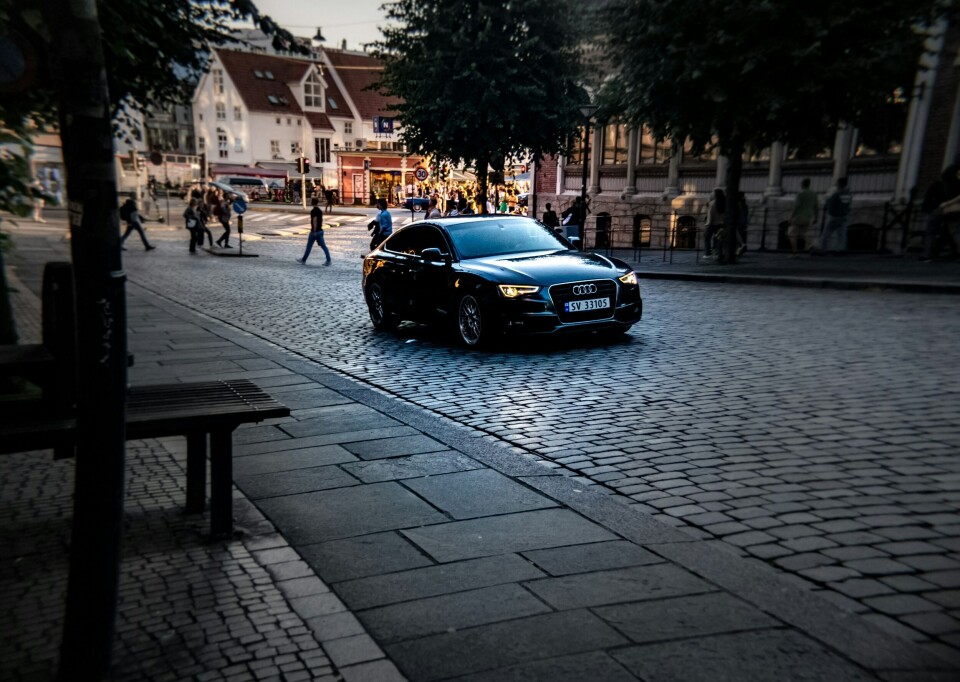THIS CONTENT IS BROUGHT TO YOU BY the Norwegian University of Life Sciences (NMBU) - read more

Norwegian cities still prioritise car-friendly development over public transport
Car-friendly urban development hinders public transport improvements – but planners can help with the right support.
Many cities across the globe are looking to reduce personal car use and promote more environmentally-friendly transport options.
The goal is to reduce traffic congestion and improve sustainability by encouraging more people to use public transport.
New research from the Norwegian University of Life Sciences (NMBU) shows that Norwegian cities still prioritise car-friendly transport development. This limits opportunities to improve public transport and its environmental and personal benefits.
Urban planning
Researcher Eva-Gurine Skartland explored how urban planning can make public transport more attractive in the Norwegian cities of Hamar, Haugesund, Trondheim, and Stavanger.
Urban planners in these cities have planned improvements to the public transport systems, including changes to networks, routes, and the level of service.
Skartland found that the planned changes are likely to increase the competitiveness of public transport. However, they are not enough to reduce car usage. This is because urban planning continues to prioritise private cars.
Conflicting goals
One of the biggest issues is that city plans often have conflicting goals.
While some plans promote public transit, others – such as expanding roads and adding car parks – encourage private car use. Due to a sectorised planning system, these conflicting goals and plans are not always identified and problematised.
Unless car-friendly measures are restricted, people will continue to opt to drive rather than use public transport, argues Skartland.

Her findings reveal that urban planners know public transport improvements alone have limited impact. Car access and land use development that promotes driving must also be restricted. Planners strive to inform decision-makers about this conflicting development with varying success.
Better coordinated policies needed
The results gave different findings according to the size of the cities.
“In smaller cities, it's likely that public transport will compete with walking and cycling in central areas. Competing with private cars is, however, challenging since the built environment and development patterns are likely to encourage car use,” explains Skartland.
She notes that in central areas of medium-sized cities, where urban planning discourages car use through less car-friendly development, public transport tends to be more competitive.
Well-designed bus routes alone cannot counteract car-friendly urban planning.
Adjusting public transport systems might help, but larger changes are needed. Limiting car use and aligning land use with transport policies are essential to make public transport more appealing in small and medium-sized cities.
“Urban planners have updated knowledge and can contribute to changes by making conflicting development visible to decisionmakers and the public,” says Skartland.
She adds that such agency requires supportive conditions for planners – something that varies across the cities she studied.
"It's therefore likely that structural changes are necessary for urban planning to contribute to increase public transport competitiveness versus the private car,” she concludes.
Reference:
Skartland, E.G. 'Urban planning practice and transit competitiveness versus private car use', Doctoral dissertation at the Norwegian University of Life Sciences, 2024. (About the dissertation)
More content from NMBU:
-
Shopping centres contribute to better health and quality of life
-
We're eating more cashew nuts – and the consequences are serious
-
Do young people with immigrant parents have better health?
-
Who’s picking your strawberries this summer?
-
Can coffee grounds and eggshells be turned into fuel?
-
Rising housing costs fuel inequality in Norway





































